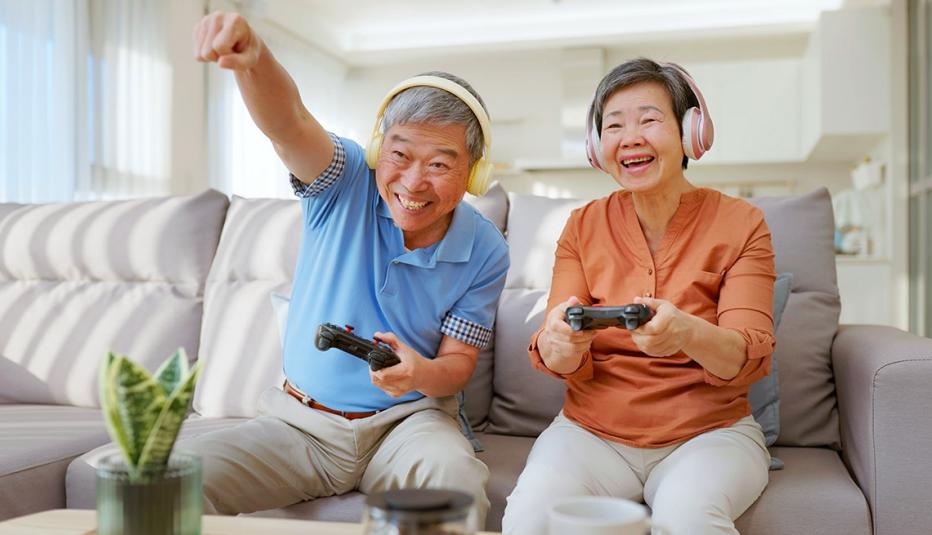AARP Hearing Center
The pandemic might be the bridge to close the generational tech divide as older adults flocked to adopt technology in 2020. Usage increased across the technological spectrum, according to AARP’s annual technology survey. Older adults are streaming movies and TV shows, video-chatting with loved ones and colleagues, and buying new smart devices, such as TVs, phones, watches, tablets, home assistants, and home security.


With social distancing restricting social interaction, adults 50 and older not only snatched up new devices, but also were more likely to use them daily. They purchased more smart TVs, smartphones, tablets, and wearables, and audio devices such as earbuds and headsets.
Barriers weren’t completely eliminated, however. Older adults cited cost, knowledge gaps, and privacy concerns as top reasons they may be hesitant to adopt technology. More than half (54%) admitted they want a better grasp of the devices they’ve acquired, while more than one in three (37%) said they lacked confidence when using the technology that has otherwise become so much more prevalent in their lives.
Owning More Devices
Ownership in all devices is up, according to the survey. Older adults are buying smartphones, home assistant technology (such as Amazon’s Echo), wearable technology (including smartwatches), and tablets (such as iPads). And ownership is up across age groups. Not only are adults in their 50s buying devices; people in their 60s and 70s are buying more, too.
Adults 70-plus have a particular fondness for tablets, with more than half (53%) owning one, up from 40% in 2019. These tablets aren’t just sitting on a coffee table gathering dust: 69% of those 70-plus said they use their tablets daily.
Spending is up significantly as well, with older adults spending on average $1,144 on tech, up from $394 in 2019. The top three tech purchases are smartphones, smart TVs, and Bluetooth headsets/earbuds.
Staying Connected While Distanced
Texting, email, social media, and video chatting have become commonplace as the COVID-19 pandemic has forced people to remain home, separated from friends and family. More than 80% of those 50-plus said they use technology in some form to stay connected, many on a daily basis.
Perhaps credited with helping people maintain relationships during a period of unprecedented social distancing, technology gave older adults some good vibes, with 44% saying they have a more positive feeling toward tech now than they did prior to the pandemic.
Older adults’ tech love won’t be fading in the future. In particular, those who discovered video conferencing anticipate using it even after the pandemic ends. Live virtual events also gained loyal fans. While content is the most important reason for attending a live virtual event, many indicated they will continue to tune in virtually even after it is safe to congregate in person.
Streaming Content Has Increased
Live events aren’t the only form of entertainment older adults are enjoying; they are also logging in more often to streaming services such as Netflix, Amazon, Hulu, and, more recently, Disney+. More older adults are also using smart TVs. In 2020, 64% owned a smart TV, up from 49% in 2019. Even among those 70 and older, more than half now own a smart TV.
The move to smart TVs also signals a significant shift in viewing habits. Viewers are moving away from traditional network and cable stations in favor of streaming options. Just 38% of adults 50-plus said they primarily watched network and cable TV in 2020, a staggering drop from 60% in 2019.
Concerns Over Privacy, Literacy, and Access Remain
Even as more older adults are comfortable using technology for work, entertainment, and communication, secure internet access is still a barrier. As in past years, the survey found barriers to high-speed internet access. While 76% of adults 50-plus have wireline high-speed internet, 18% do not have internet access or only have access through their phone or satellite provider — and 5% are not sure if they internet connection at home. More than half of those in rural areas say access to high-speed internet is a problem for them.
Cost is also a concern. Six in 10 adults 50-plus, regardless of their residential location, said that the cost of high-speed internet is a problem for them personally.
Beyond infrastructure, many still grapple with questions on how to use a device as well as how to protect their privacy. Approximately 44% of older adults are not confident that what they do online remains private, and more than half are not confident the information they give to or receive from their smart home assistant stays private.
Methodology
The online and phone survey of 2,807 adults ages 18 and older (n = 2,271 adults 50-plus) was conducted between September 25 and October 20, 2020 in English and Spanish. The survey took about 26 minutes to complete and was weighted according to demographics for U.S. adults age 18+, 50+ and by generation.
For more information, please contact Brittne Kakulla at bkakulla@aarp.org. For media inquiries, please contact media@aarp.org.


































































